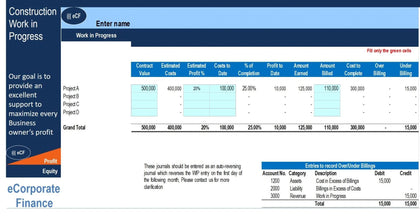In a leveraged buyout (LBO), a sponsor company acquires a target company by utilizing a substantial amount of debt as leverage. This strategy allows for a lower cost of financing the acquisition compared to using equity alone, as the interest payments on the debt are typically tax-deductible. The target company's cash flow is then used to repay the principal amount of the debt.
Transaction Assumptions
These assumptions pertain to the terms of the transaction. It is assumed that the transaction will be conducted on a cash-free, debt-free basis, meaning the company will be sold without any outstanding debt or surplus cash, which is standard practice in such transactions.
- LBO Target Name: The name of the company being targeted.
- Transaction Year: The year in which the transaction is finalized, referred to as Year 0.
- Entry Multiple (EV/EBITDA): This ratio is used to determine the enterprise value of the target company relative to its EBITDA.
- Transaction Fees: The total one-time expenses paid for the transaction to external parties, including investment banks, legal counsel, consultants, auditors, and regulatory bodies.
- Targeted Exit Multiple (EV/EBITDA): The desired exit multiple for the sponsor equity, which may be the same as the entry multiple.
- Investment Period: The timeframe between the transaction and exit.
Operational Assumptions
These assumptions relate to the target company's operations.- Revenue LTM: The revenue generated by the target company over the last twelve months (LTM).
- EBITDA Margin: The proportion of EBITDA to total revenue.
- Annual Revenue Growth (y-o-y): The expected annual growth rate of the target company's revenues.
- D&A % of Revenue: The projected ratio of the target company's Depreciation & Amortization (D&A) to its revenues.
- CAPEX % of Revenue: The projected ratio of Capital Expenditures (CAPEX) to total revenues.
- Change in NWC % of Revenue: The rate of change in Net Working Capital (NWC) relative to total revenues.
- Tax Rate: The applicable tax rate for the company.
Debt Assumptions
For simplification, there is a single debt assumption type where you can input the average weighted interest rate.
- Debt Amount: The total debt acquired from creditors.
- Interest Rate: The average weighted interest rate of debts obtained from various sources.
- Mandatory Annual Payment: If the debt includes a mandatory payment clause, select "Yes" and specify the mandatory amortization term. If no mandatory payments are required, select "No" and the debt will be repaid using free cash flow.
- Debt Amortization Term: The maximum debt amortization term. Prepayments from free cash may shorten the actual term.
- Prepayment Allowed: Indicates whether prepayments can be made on debts using available free cash flow. If "No" is chosen, prepayments will be zero during the investment period, and only mandatory payments will be made.























